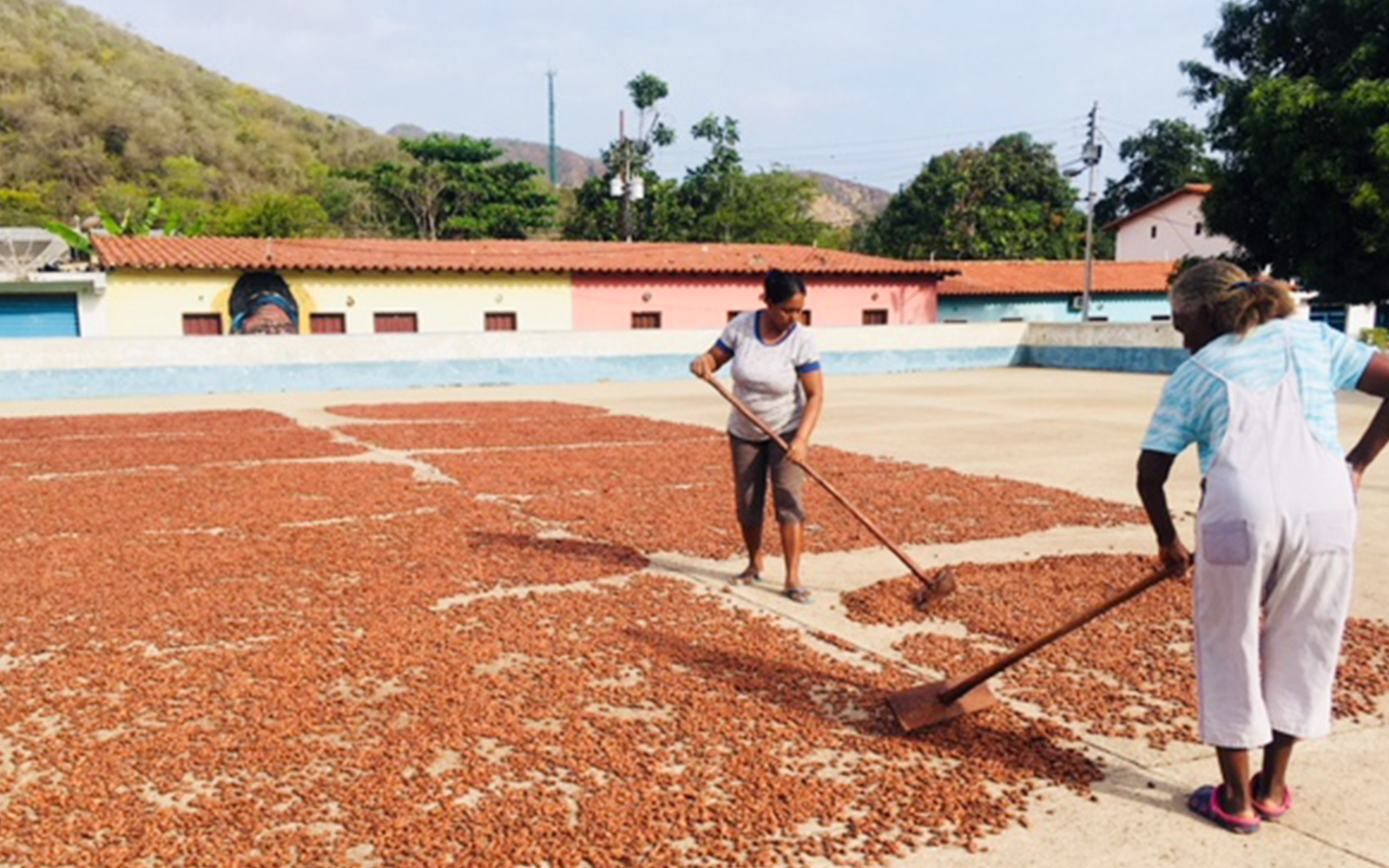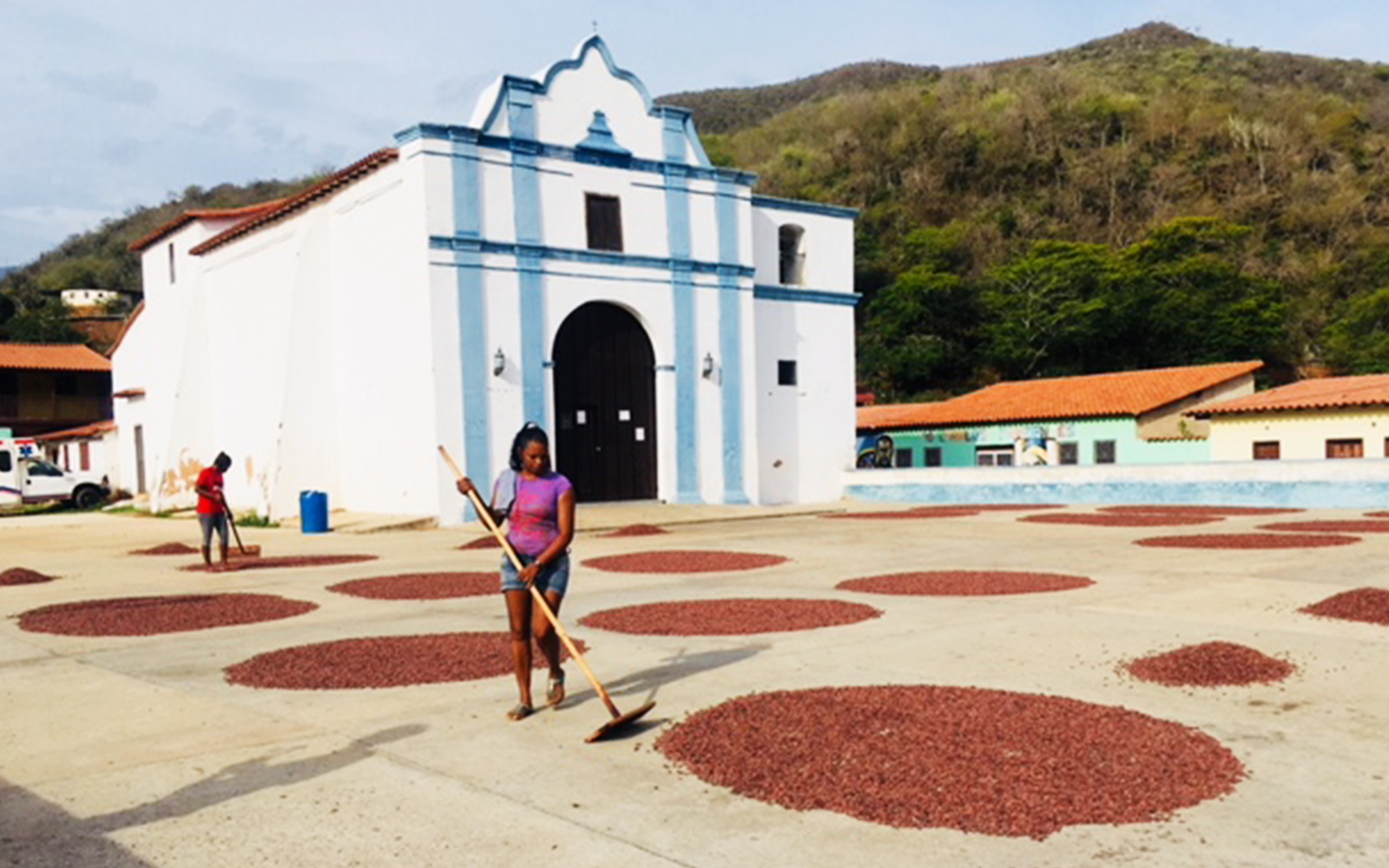DIRECT TRADE




COUNTRY OF ORIGIN
VENEZUELA
State: Aragua
Surface: 160km2
Average altitude: 254m (833 feet)
REGION
Chuao, northwest of Caracas in the Venezuelan State of Aragua, is a small isolated valley between the mountains of the Henri Pittier National Park and the blue waters of the Caribbean.Access to the valley is by either ocean going boat or mountain trails, there is no road.The adventurous ocean trip, known as the “Choroni Path”, takes 25 minutes in local “Peñero” (pronounced “peniero”) boats from the town of Choroni to the beaches of Chuao.The mountain crossing,accessible only on foot, known as the “Cacao Route”, crosses peaks surrounding Mt. Turico in the National Park.
GENETICS
First time visitors to the plantations of Chuao are surprised by the wide genetic variation (encompassing around 25 varieties) within the valley’s cacao collection.Chuao cacao is a Trinitario / Criollo blend (up to 32% Criollo) giving this Venezuelan bean its unique quality and aroma.
CHUAO’S HISTORY
For more than 450 years Chuao has been famous for its cacao.Chuao is an idealic place, prosperous, safe, clean and well maintained, almost free from many of Venezuela’s current problems.Cacao cultivation began in the 17th century at a time when the Spanish colonizers decimated the indigenous American population.In 1827 the region became the property of the University of Caracas, now called the Central University of Venezuela.Ownership of Chuao over the next 150 years was tumultuous, only resolved in 1976 when the Venezuelan Ministry of Agriculture deeded this precious farming land to the traditional farmers of the valley through their collectively owned Cooperative “La Empresa Campesina de Chuao”.
THE COMMUNITY OF CHUAO
Cacao is the main economic activity for families of the valley. 125 out of the 2,330 inhabitants of Chuao work in the production of cacao. Cacao workers are primarily women, as men of the valley are predominantly fishing. The Chuao plantation is owned by the community and managed by their Cooperative, “La Empresa Campesina de Chuao”. All income from cacao sales is shared by members of the Cooperative.Members of this agricultural community are mostly descendants of African slaves brought to this coast by early European colonialists. They are dedicated to the preservation of their traditional cacao production. To them, Chuao cacao is not just an agricultural product; it represents their proud way of life, identity, culture, language and land.
ORGANIZATION OF CACAO WORKERS
The Cooperative, La Empresa Campesina de Chuao, is the sole cacao producer in the valley.The Cooperative owns the plantations and is responsible for the harvesting, fermentation and drying of beans. Members of the Cooperative are divided into teams with separate and distinct responsibilities.For example the Harvest Team is responsible for seeding (done by alignment) and irrigation (controlled flooding using river water). Teams are composed of 75 women and 50 men, continuing the time honored tradition of female dominance of the valley’s cacao production.
HARVEST AND FERMENTATION
During the peak of harvest, women collect ripe cacao pods, tree by tree, filling their buckets with wet cacao (cacao in its mucilage without the pod). Trucks collect the harvest, transferring the wet cacao to 1000 kg capacity fermentation boxes covered with banana leaves after filling.The beans are stirred with wooden tools every 24 to 48 hours over a 6 to 7 day fermentation period.
Much of the post-harvest work is done by women of the valley,often singing “cacao songs” while working. It is said this joyous singing might be the “je ne sais quoi” that makes Chuao cacao so unique and special amongst the world’s cacao.
DRYING
Cacao drying of Chuao is perhaps the best in the world, a tradition practiced for 450 years! Fermented beans are thinly spread on the pavement facing the village church and then sundried in mild conditions. Drying beans are gathered nightly (or when it rains) and stored in clean odorless rooms on wooden floors.
Drying on the concrete pavements is a threefold process. On Day 1 fermented beans are spread on coarse paving furthest from the church.On Day 2, beans move to finer pavement closer to the church for two more days. On Day 4 the beans are transferred to the smoothest pavements adjacent to the church for three days of drying.
The cacao is taken in the storage room every night, of during very hot hours or when it rains. The sun-drying method of Chuao, worldwide known as “the Chuao method” is mild and respectful of the most subtle aromas.
The raking of cacao is quite beautiful to watch. In the morning, after the pavements have been cleaned, women with rakes and brooms create ever expanding circles of drying beans. In the late afternoon the beans are raked into piles and returned to nightly storage.
Once drying is completed, beans are sorted, selected and packed into 60 kilo bags. Bags are delivered to the Chuao pier, transferred to fishing boats and transported to Puerto Colombia, Choroni. Then by truck to Caracas where the warehouse of the exporter is located.
CERTIFICATION
The cacao supplier, Intercacao, provides chocolate makers with a signed Certificate of Origin and Traceability guaranteeing the authenticity of Cacao de Chuao.